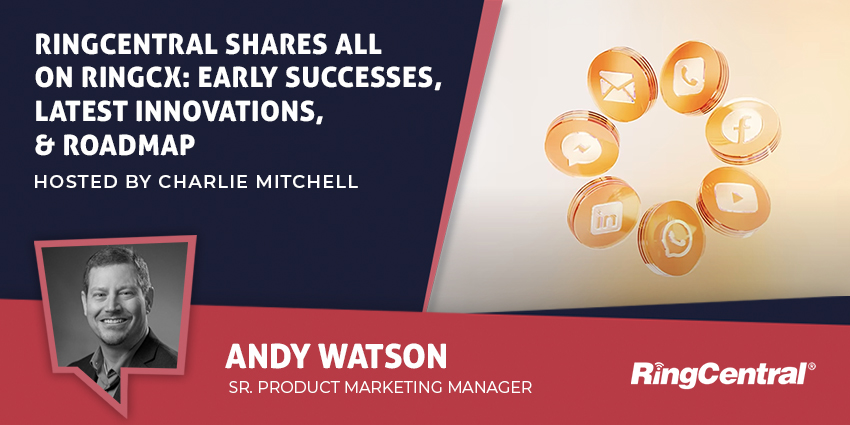Today customers have many ways to engage with the brands they love, but they rarely do so through only one channel. Creating seamless, integrated customer journeys that deliver differentiated experiences across touchpoints requires a holistic, data-driven understanding of where your brand promise may be out of alignment with the reality of what is being delivered.
An omnichannel contact center strategy requires connecting the data from customer touchpoints across multiple communication channels to understand how customers engage with your brand. All the data from channels like voice, email, chat, virtual assistants, text messaging, and social media are analyzed together, essentially breaking the silos and allowing for seamless, more effortless experiences.
The benefits of an omnichannel contact center strategy go way beyond channel integration and increased agent productivity. CX Today welcomed Kate Jones, Senior Director, CX Journey Consulting & Analytics at Concentrix, to discuss the three steps CX leaders can take to evolve their omnichannel data strategies to facilitate deeper customer engagement.
Step 1: Break Down CX Channel Data Silos
One of the problems with traditional contact centers is that they are channel siloed. To execute proper data analysis, it’s crucial to have the ability to extract data from all channels, preferably at the same time and without much hassle.
An omnichannel approach enables organizations to discover how much available data there is, both structured and unstructured, and whether it can be used to fuel any CX transformation engine. The omnichannel approach coupled with journey analytics offers a unified data view of every customer interaction, shedding light on the actual state of the customer journey. More data allows for more personalized and intimate customer interactions. Building on this, Jones explains:
“Having all of the data associated with customers across multiple channels allows for much greater customer understanding. You know exactly what is going on at each point in their journey. You can see the quality of those experiences, which can be measured with sentiment, derived from unstructured data using AI, as well as with insights from structured data, like time to resolution.”
“Omnichannel data coupled with journey analytics helps us visualize at scale the end-to-end journey, which allows us to understand the most common customer friction points and uncover areas for focus improvement efforts.”
Omnichannel data also helps with understanding which channels are best for which scenarios. “Aside from allowing customers to engage with us in a channel of their choice, we also want to guide them to the lowest effort experience and identify that in a data-driven way”, says Jones.
When done right, organizations can detect situations where customers should be guided to another channel that is lower effort and offers a better experience for them depending on the customer’s issue. In the end, customers are looking for a fast and seamless experience regardless of the channel.
Step 2: Leverage Insights Across Channels to Accelerate Transformation
The key to accelerating CX transformation is focusing efforts on the areas that will have the most significant and rapid impacts: those that balance quick wins to build momentum with larger strategic differentiators. Jones thinks CX leaders often overlook the power and scope of omnichannel data and risk focusing on aspects of the customer journey that are not the most important or impactful.
Kate explained that one of her clients wanted to improve its IVR experience and only looked at IVR data to identify improvement opportunities. They needed a whole new perspective. She says:
“When we looked at data across channels, we could see that many customers were making a payment in the IVR and then hanging up but immediately calling back to speak with an agent to confirm that the payment was processed. If we were looking at IVR data alone, this would look like a successfully contained call.”
“By taking an omnichannel data view, we significantly reduced customer effort and support costs by simply confirming payment in the IVR as part of the self-service flow. This change along with other critical insights drove $3M in savings within the first three months alone.”
The issue is figuring out where to focus because there’s so much data available. Rather than trying to understand everything at once, it is better to zero in on the highest impact areas and then dig deep to understand what is happening and the underlying root cause.
Focusing on the highest impact areas will create the momentum for real change. Once organizations get to grips with what the data is telling them, they can put effort into designing thoughtful experiences, influencing brand loyalty and, ultimately, customer experience.
Step 3: Create a Virtuous Cycle of CX Insights
According to Jones, “CX leaders need to leverage omnichannel contact center data as a core pillar of their transformation model to understand the larger customer journey, instead of a one-time event.”
CX leaders should see data as a way to keep a pulse on changing customer demands consistently. Even the best-designed customer experiences have room for improvement. Unpredictable behaviors can occur at any time, so it is critical to continuously observe the data and track every customer interaction to notice trends before they really take off.
Finally, Jones believes the key is in a data-driven approach. Organizations adopting this approach can proactively uncover new insights, which differentiates them as true experts in customer experience.
Rather than following the latest trends in technology, organizations should strive first to understand what it is that customers need and want. Once you have a customer-centred approach in place and a repeatable process for uncovering areas to improve along the customer journey, the technology becomes just an enabler.
Concentrix helps you connect the dots between customer journeys and business goals. Concentrix applies CX perspectives to interpret behaviors and intent and provide the right mix of smart design, continuous support, and customized roadmaps that empower action and promote transformation. Learn more by visiting the Analytics & Insights page on the Concentrix website.







